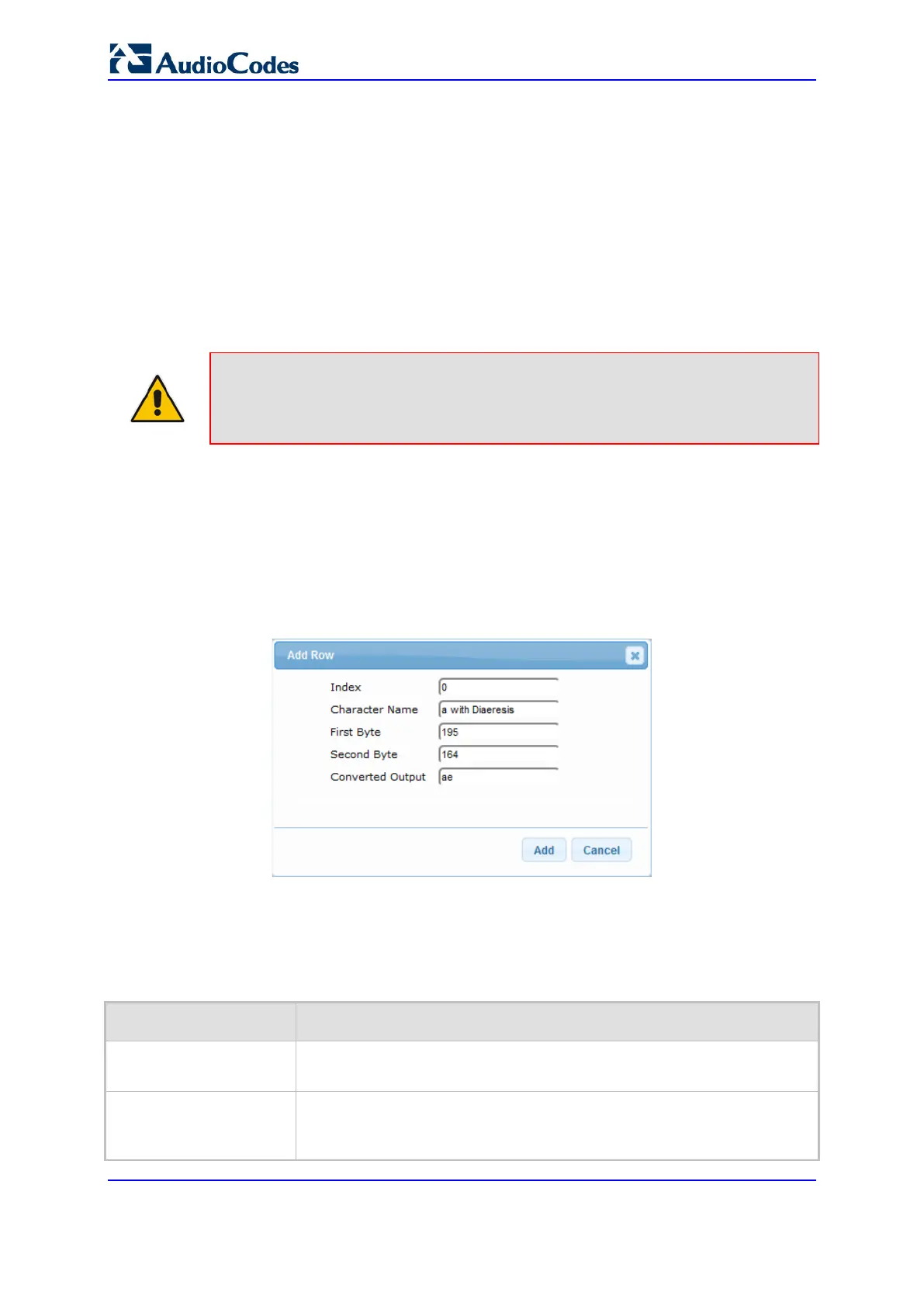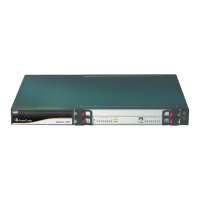User's Manual 542 Document #: LTRT-89730
Mediant 3000
27.11 Converting Accented Characters from IP to Tel
The Char Conversion table lets you configure up to 40 Character Conversion rules. A
Character Conversion rule maps (converts) accented characters (Unicode / UTF-8)
received from the IP side into simple ASCII characters (ISO-8859) for sending to the Tel
side. Typically, the device receives the caller ID and calling name in Unicode characters (in
the SIP INVITE message). Unicode characters consist of two bytes, while ASCII characters
consist of one byte. Accented characters are used in various languages such as German.
An example of such a character is the umlaut (or diaeresis), which consists of two dots
placed over a letter, as in ä. The importance of this conversion feature is that it allows
PSTN entities that do not support accented characters, to receive ASCII characters. For
example, the device can convert the Unicode character ä into the ASCII character "ae".
Note: The table works in conjunction w
ith the ISO8859CharacterSet parameter.
When the parameter is set to [0] (Latin only), it converts accented characters into
ASCII (e.g., ä to "a"). However, the table can be used to overwrite these "basic"
conversions and customize them (e.g., ä to "ae" instead of the default "a").
The following procedure describes how to configure Character Conversion rules through
the Web interface. You can also configure it through ini file (CharConversion).
To configure a Character Conversion rule:
1. Open the Char Conversion table (Configuration tab > VoIP menu > Gateway >
DTMF & Supplementary > Char Conversion).
2. Click Add; the following dialog box appears:
Figure 27-4: Char Conversion Table - Add Row Dialog Box
The figure above shows a configuration example where ä is converted to ae.
3. Configure a Character Conversion rule according to the parameters described in the
table below.
4. Click Add.
Table 27-5: Char Conversion Table Parameter Descriptions
Parameter Description
Index
[CharConversion_Index]
Defines an index number for the new table row.
Note: Each row must be configured with a unique index.
Character Name
Defines an arbitrary name to easily identify the row.
The valid value is a string of up to 40 characters.

